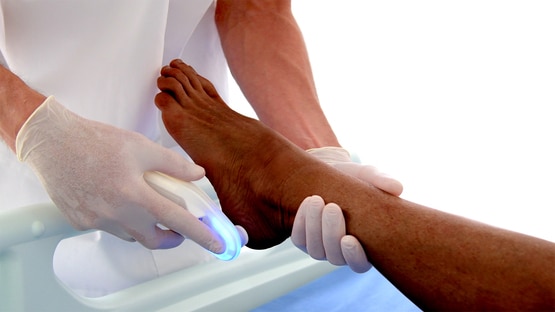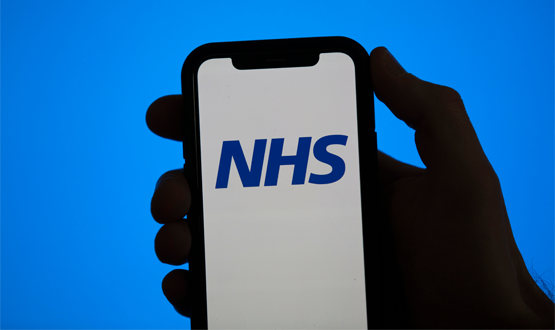Technology identifies risk of pressure injuries before wounds progress
- 2 April 2024

Pressure injuries are a major risk in intensive nursing and care environments, but by the time they are visible, they are much more difficult to treat. Bruin Biometrics has produced a device that it says can prevent sores from developing in the first place.
The US-based company is already using its Provizio SEM (sub-epidermal moisture) scanner in the UK, and it is the first pressure injury prevention scanner to be added to the Department of Health and Social Care’s drug tariff, allowing it to pay for use of the device in patients’ homes as well as in hospital.
“There has been an awful lot of science put into the aetiology and pathophysiology of pressure injuries and in the how and why they develop and the course of their disease state,” Bruin Biometrics CEO Martin Burns told Digital Health News in an interview.
He argues that there has previously been general acceptance that pressure injuries are part of the normal course of care. “And, actually, it’s not the normal course of care at all – it shouldn’t be.”
In the UK, more than 700,000 people are affected by pressure ulcers annually, with 180,000 of these newly acquired, according to data from the National Institute of Health and Care Excellence. More than 60% of these injuries occur in people over 60.
Most occur on bony parts of the body, such as heels, elbows, hips and tailbone, according to the NHS. Pressure injuries develop from focal edoema, or moisture, located below the skin, and are most common in patients who are in hospital or have mobility problems.
“If you find it early enough and you can intervene correctly, you can steer off the disease and the person doesn’t have to develop what we refer to as broken skin ulcers which are the ones that cause all the complexities,” Burns said. “Once the skin breaks, you end up with bacterial loading, the costs of care goes through the roof and pain levels go up.”
Other efforts to address the problem have focused on monitoring the position of patients. In November, Kepler Vision Technologies announced a brand new feature to its Night Nurse system that analyses a patient’s lying position to monitor when they need to be moved to help eliminate the risk of pressure ulcers.
Traditional methods of detecting patients with an early-stage pressure injury are close to random, Burns says, until the damage becomes visible to the naked eye. The Provizio SEM has a sensitivity of more than 80% when pressure injuries are still at the deep-tissue stage, helping nurses identify them and take remedial action and thereby ensuring that injuries are less likely to progress.
Improving health and saving nursing time
An unpublished study of 46 patients by registered nurses Veronica Pollard, Heather Hodgson and Arlene McNelis at NHS Greater Glasgow and Clyde trust found that the SEM scanner reduced pressure and moisture damage, and improved nurses’ knowledge of pressure ulcer grading, prevention and management.
As a result, the need to reposition patients was reduced by 55%, freeing up nursing time. The study also found that the pressure ulcer rate per 1,000 occupied days fell from 5.77 to 0.00 over the period of the study.
Other studies have also shown a drop in incidence of pressure ulcers following use of the technology, Burns said. The use of the scanner is also helping to modernise the care pathway for wound management, he added.
The technology also holds the promise of eliminating some of the racial inequities involved in diagnosing pressure wounds. A separate study published in November in the Journal of Advanced Nursing has found that the Provizio SEM technology is effective at detecting early-stage pressure damage in patients with darker skin, where visual observance is often less effective.
“What’s wonderful about this is that it’s skin-tone agnostic, and the reason is because the pathophysiological elements of skin and tissue are broadly, from what we can see in our data, the same regardless of skin tone,” Burns says. “So, the technology is diagnosing more of the right patients and anatomies, rather than missing them, and it has levelled the health disparity playing field.”




